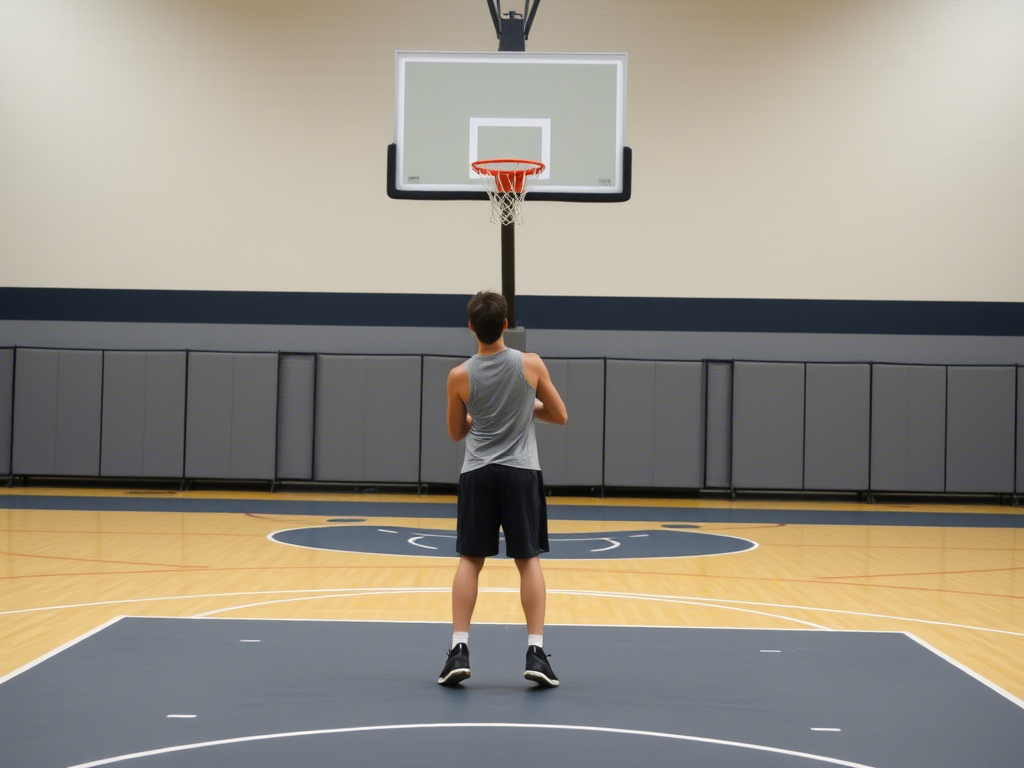Calculate Your Basketball Dunking Potential
Are you dreaming of throwing down an impressive slam dunk but wondering if you have what it takes? A dunk calculator is the perfect tool to determine exactly what you need to achieve this basketball milestone. Whether you’re 5’5″ or 6’2″, this comprehensive guide will break down everything you need to know about your dunking potential.

What Is a Dunk Calculator?
A dunk calculator is a specialized tool that measures the vertical jump height needed to dunk a basketball based on your physical measurements. By analyzing your height, standing reach, and current vertical leap, these calculators provide precise measurements to help you understand what it takes to dunk on a standard 10-foot basketball rim.
How Dunk Calculator Work
The science behind a dunk calculator is relatively straightforward but incredibly useful:
- Measure your standing reach: This is how high you can reach with your arm extended while standing flat-footed
- Determine the height of the basketball rim: Standard regulation rims are 10 feet (120 inches) high
- Calculate the vertical jump needed: By subtracting your standing reach from the height needed to dunk
For example, if your standing reach is 8 feet (96 inches) and you need to get approximately 6 inches above the rim to successfully dunk, you would need a vertical jump of:
- 120 inches (rim height) + 6 inches (clearance) – 96 inches (standing reach) = 30 inches vertical jump
Standing Reach Dunk Calculator
Your standing reach is crucial for determining dunking potential. This measurement reflects how high you can extend your arm while standing flat-footed. The standing reach dunk calculator uses the formula:
SR = H + AR
Where:
- SR = Standing Reach
- H = Height
- AR = Arm Reach (extension beyond height)
For most people, standing reach is approximately 1.33 times their height. For basketball players, this ratio is slightly higher due to longer wingspans. To measure your standing reach:
- Stand facing a wall with your feet together
- Reach up as high as possible with both feet flat on the ground
- Mark or measure the highest point your fingertips reach
Average Standing Reach By Height
Understanding the relationship between height and standing reach dunk calculator helps you assess your dunking potential:
| Height | Average Standing Reach |
|---|---|
| 5’7″ | 7’2″ – 7’6″ |
| 5’8″ | 7’3″ – 7’7″ |
| 5’9″ | 7’4″ – 7’8″ |
| 5’10” | 7’6″ – 7’10” |
| 5’11” | 7’7″ – 7’11” |
| 6’0″ | 7’8″ – 8’0″ |
| 6’2″ | 7’11” – 8’3″ |
Vertical Jump Dunk Calculator
Your vertical jump is the maximum height you can leap from a standing position. The vertical jump dunk calculator helps you determine your current jumping ability by measuring the difference between your standing reach and your maximum jump reach.
Many factors influence vertical jump ability:
- Leg strength and power
- Explosive muscle fiber composition
- Jump technique
- Core strength
- Body composition
According to fitness data, here are some average vertical jump measurements by activity level:
- Untrained males: 16-20 inches
- Untrained females: 12-16 inches
- Trained males: 24-28 inches
- Trained athletes: 28-34+ inches
How Much Vertical To Dunk At 6 Feet
If you’re exactly 6 feet tall with an average standing reach of around 7’10”, you would need approximately:
- 22-24 inches to touch the rim
- 28-30 inches to dunk a basketball
Players with longer arms relative to their height may need less vertical jump to dunk calculator. For someone 6 feet tall with an above-average standing reach of 8’0″, the vertical needed drops to:
- 20-22 inches to touch the rim
- 26-28 inches to dunk
What Is Your Vertical If You Can Touch Rim At 5’8″
For a 5’8″ person with an average standing reach of around 7’4″, touching the rim (10 feet high) would require a vertical jump of:
- 10 feet (120 inches) – 7’4″ (88 inches) = 32 inches
Therefore, if you’re 5’8″ and can touch the rim, your vertical jump is approximately 32 inches, which is well above average and approaching elite levels for someone of that height.

Can You Dunk At 6’2″?
At 6’2″ with a typical standing reach of around 8’1″-8’3″, you would need:
- 17-19 inches of vertical to touch the rim
- 23-25 inches of vertical to dunk a basketball
Most athletic individuals at this height can develop sufficient vertical jump to dunk with consistent training. A vertical jump of 24 inches is achievable for many dedicated athletes at this height.
How High Do You Have To Jump To Dunk At 6’2″?
To dunk at 6’2″:
- Standard rim height: 10 feet (120 inches)
- Typical standing reach: 8’2″ (98 inches)
- Clearance needed above rim: 6 inches
Calculation: 120 inches + 6 inches – 98 inches = 28 inches
Therefore, a 6’2″ person needs approximately a 28-inch vertical jump to dunk comfortably, though some with excellent hand size and ball control might manage with 25-26 inches.
Answering Your Specific Dunking Questions
Can I Dunk If I’m 5’11”?
Yes, many 5’11” players can dunk, but it requires dedicated training. With an average standing reach of 7’9″, you would need approximately:
- 27-29 inches of vertical to touch the rim
- 33-35 inches of vertical to dunk comfortably
While this is above average, many committed athletes can achieve this level with proper training protocols focusing on explosive strength and jumping technique.
Can a 5’5″ Guy Dunk?
While challenging, it’s not impossible. At 5’5″ with a typical standing reach of around 7’0″, you would need:
- 36 inches to touch the rim
- 42-44 inches to dunk comfortably
This is approaching elite-level vertical jump territory. Brandon Todd, who stands at 5’5″, famously trained himself to achieve a 40+ inch vertical leap, allowing him to dunk. However, reaching this level requires exceptional dedication, specialized training, and potentially favorable genetics for explosive power.
Can I Dunk If I Am 5’10”?
Yes, at 5’10” with an average standing reach of approximately 7’7″, you would need:
- 29-31 inches to touch the rim
- 35-37 inches to dunk
Many athletic individuals at this height can train to achieve this vertical jump through consistent work. It’s challenging but well within reach for dedicated athletes. There are numerous examples of 5’10” dunkers who have achieved impressive vertical jumps through specialized training.
Is a 30 Inch Vertical Enough to Dunk?
Whether a 30-inch vertical is enough to dunk depends on your height and standing reach:
- For someone 6’3″ or taller: Yes, likely sufficient
- For someone 6’0″ to 6’2″: Yes, comfortable dunking range
- For someone 5’10” to 5’11”: Possibly, but might only be able to dunk with perfect technique
- For someone under 5’9″: Unlikely without additional vertical
For reference, a 30-inch vertical jump is considered very good and exceeds the average for recreational athletes. NBA players average between 28-34 inches for their standing vertical jump.
Dunk Calculator Squat Training
Strength training, particularly squats, plays a crucial role in developing the explosive power needed for dunking. The relationship between squat strength and vertical jump has been established in sports science research.
For optimal dunking potential:
- Aim to squat 1.5x your bodyweight for a strong foundation
- Incorporate plyometric training for explosive power
- Focus on Olympic-style squats, which engage more of the posterior chain
According to vertical jump research dunk calculator, improving your squat strength from 1.5x to 2x your bodyweight can potentially add 4-6 inches to your vertical jump.
Height Calculator for Dunking Potential
To assess your dunking potential quickly, use this formula:
- Take your height in inches
- Multiply by 0.67 to get your expected standing reach deficit from a 10-foot rim
- Add 6 inches for dunking clearance
- This gives you the approximate vertical jump needed to dunk
For example, for someone 5’10” (70 inches):
- 70 × 0.67 = 46.9 inches (standing reach deficit)
- 46.9 + 6 = 52.9 inches needed to jump
Since the rim is 120 inches high, your standing reach would be approximately 120 – 46.9 = 73.1 inches (or about 7’7″) Therefore, you would need a vertical jump of around 52.9 inches to dunk.
How To Improve Your Vertical Jump
To increase your vertical jump for dunking:
- Strength Foundation: Focus on squats, deadlifts, and hip thrusts
- Plyometric Training: Box jumps, depth jumps, and jump squats
- Technique Work: Proper arm swing and takeoff mechanics
- Core Stabilization: Planks and rotational exercises
- Consistent Training: Progressive overload principle
- Proper Recovery: Adequate rest between high-intensity sessions
Most importantly, track your progress using a dunk calculator to see how your improvements in vertical jump are bringing you closer to your dunking goals.
Conclusion
Whether you can dunk depends on a combination of your height, standing reach, and vertical jump ability. The dunk calculator provides a scientific approach to understanding exactly what you need to achieve this basketball milestone.
Remember that while height gives an advantage, many shorter athletes have proven that with dedicated training and proper technique, dunking is achievable across a wide range of heights. Use dunk calculator provided in this guide to set realistic goals and track your progress as you work toward your first slam dunk.
By understanding the physics and biomechanics behind dunking, you can develop a targeted training approach that addresses your specific needs and maximizes your dunking potential. Whether you’re 5’5″ or 6’2″, with the right commitment and training program, you may soon find yourself soaring above the rim!